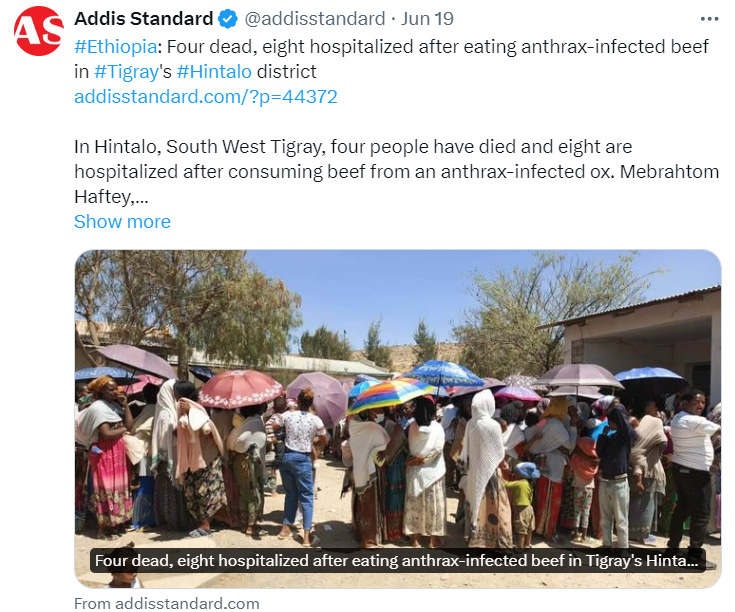The Tigray Health Bureau announced an outbreak of anthrax in the Hintalo district in the South West Tigray in the northernmost part of Ethiopia.
Seventeen people sought treatment for anthrax, which four died and eight others are currently hospitalized. The rest returned home after treatment.
Authorities attribute the outbreak to the consumption of meat from an infected, unvaccinated ox.
Officials with the Public Health Emergency Management team say the incident occurred on June 5, when a sick ox infected with anthrax was slaughtered and the meat was shared with roughly 500 people across 30 households.
Officials say the war in Tigray created conditions favorable for the outbreak as veterinary services including vaccinations have been disrupted.
Subscribe to Outbreak News TV on YouTube
Anthrax is a bacterial pathogen in livestock and wild animals. Ruminants such as bison, cattle, sheep and goats are highly susceptible, and horses can also be infected.
Anthrax is a very serious disease of livestock because it can potentially cause the rapid loss of a large number of animals in a very short time. Affected animals are often found dead with no illness detected.
When conditions become favorable, the spores germinate into colonies of bacteria. An example would be a grazing cow ingests spores that in the cow, germinate, grow spread and eventually kill the animal. Anthrax is caused by the bacterium, Bacillus anthracis. This spore forming bacteria can survive in the environment for decades because of its ability to resist heat, cold, drying, etc. This is usually the infectious stage of anthrax.
There are no reports of person-to-person transmission of anthrax. People get anthrax by handling contaminated animal or animal products, consuming undercooked meat of infected animals and more recently, intentional release of spores.
There are three types of human anthrax with differing degrees of seriousness: cutaneous, gastrointestinal and inhalation.





